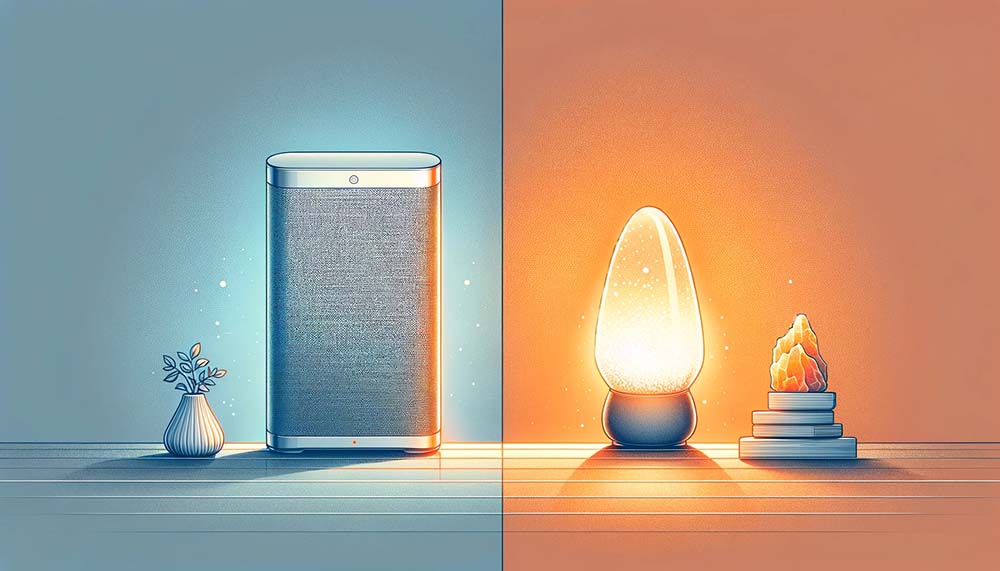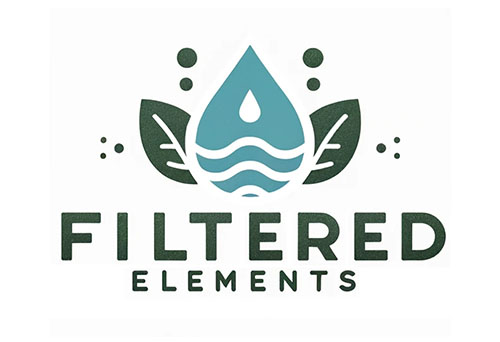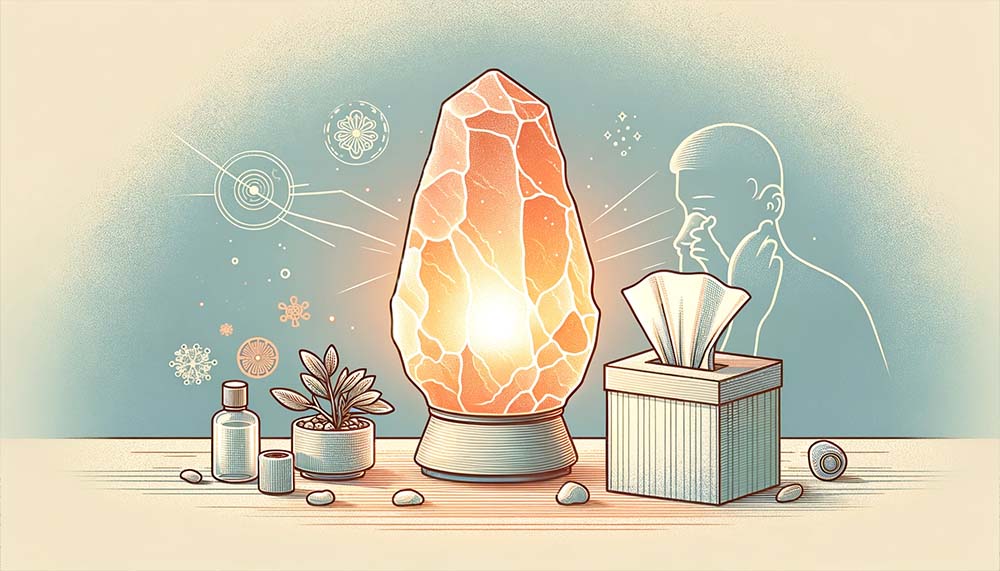Himalayan salt lamps have gained popularity as a natural remedy for allergies, but do they really provide relief or are they simply a placebo?
In this article, we explore the potential benefits of salt lamps and how they work to improve air quality and alleviate allergy symptoms. Discover the science behind the hygroscopic properties of salt and the release of negative ions, and learn how these mechanisms may help reduce allergens, improve respiratory function, enhance sleep, alleviate skin allergies, and prevent respiratory infections.
We also compare salt lamps to traditional air purifiers in terms of filtration efficiency, coverage area, proven technology, maintenance costs, and aesthetic appeal.
Whether you’re considering a salt lamp as a complementary therapy or are simply curious about their potential benefits, this comprehensive guide will provide you with the information you need to make an informed decision.
How Himalayan Salt Lamps Work

Himalayan salt lamps are believed to work through two main mechanisms – the hygroscopic properties of salt and the release of negative ions.
Salt is highly hygroscopic, meaning it readily attracts and absorbs water molecules from the surrounding air. As water vapor is drawn to the heated salt lamp’s surface, it brings along airborne pollutants such as dust, pollen, smoke particles, and other contaminants.
The salt lamp acts as a natural air purifier by trapping these particles on its surface and removing them from the air you breathe. The heat from the lamp then causes the water to evaporate back into the air, but the contaminants remain stuck to the salt.
In addition to the hygroscopic filtering effect, the evaporated water molecules are said to gain a negative electrical charge and become negatively ionized. Negatively ionized particles in the air have been linked to various potential benefits like improved mood, reduced stress, increased alertness, and enhanced sleep. The negative ions are also claimed to help neutralize positive ions emitted by electronic devices.
However, the research supporting the air purifying and health effects of salt lamps is currently limited:
- A study by the Bavarian State Office for Health and Food Safety found that salt lamps could slightly reduce airborne particles, but the effect was minimal compared to proper ventilation and filtration.
- Another study exposed bacteria to a salt lamp and found a small reduction in growth, but the impact was not significant.
While many users report positive anecdotal effects, more rigorous scientific studies are needed to quantify the air cleaning properties and health benefits of Himalayan salt lamps.
5 Benefits of Salt Lamps for Allergies

1. Reducing Allergens
Himalayan salt lamps may offer some relief for allergy sufferers by helping to reduce airborne allergens in their environment. The hygroscopic properties of salt attract water molecules from the air, and these water molecules often carry irritants like dust, pollen, pet dander, and other common allergens.
As the lamp heats up, it creates a warm, dry micro-climate around it that is less hospitable to these allergenic particles. The allergens are then trapped on the lamp’s surface, potentially reducing their prevalence in the air you breathe.
While the air-purifying effects of salt lamps may be subtle, many users find that they can contribute to a cleaner, less irritating environment.
2. Improving Respiratory Function
The negative ions released by Himalayan salt lamps are believed to have a positive effect on respiratory function, particularly for those with allergies or asthma. These ions are thought to help reduce inflammation in the airways, which can ease breathing difficulties and alleviate symptoms like congestion, coughing, and wheezing.
By creating a more balanced ionic environment, salt lamps may help to soothe irritated respiratory passages and promote easier breathing.
3. Enhancing Sleep
For allergy sufferers who struggle with disrupted sleep due to their symptoms, Himalayan salt lamps may offer some relief.
Exposure to negative ions has been linked to improved sleep quality, potentially due to their stress-reducing and mood-enhancing effects. Additionally, the warm, soothing glow of a salt lamp can create a calming ambiance in the bedroom, promoting relaxation and better sleep.
By helping to alleviate allergy symptoms and fostering a more peaceful environment, salt lamps may contribute to more restful nights for those whose allergies often interfere with their sleep.
4. Alleviating Skin Allergies
The air-purifying properties of Himalayan salt lamps may also extend to reducing airborne irritants that can trigger or worsen skin allergies. By trapping allergens and impurities on their surface, salt lamps can help to minimize your exposure to these potential triggers, which may help to soothe and prevent flare-ups of skin conditions like eczema or contact dermatitis.
Furthermore, the negative ions released by salt lamps are believed to have a calming effect on the body, potentially reducing inflammation and promoting healing. While salt lamps should not be considered a sole treatment for skin allergies, they may provide some complementary benefits when used in conjunction with other therapies.
5. Preventing Respiratory Infections
In addition to their potential benefits for allergies, Himalayan salt lamps may also help to prevent respiratory infections by creating a drier, less hospitable environment for harmful microbes. The salt crystals can absorb excess moisture from the air, reducing the humidity levels that many bacteria and viruses thrive in. By discouraging the growth and spread of these pathogens, salt lamps may help to lower your risk of contracting common respiratory illnesses like colds and flu. This can be especially beneficial for allergy sufferers, who may be more susceptible to these infections due to weakened immune function.
While the potential benefits of Himalayan salt lamps for allergies and overall health are promising, it’s crucial to remember that they should be viewed as a complementary therapy rather than a sole treatment. If you suffer from respiratory issues like allergies, taking a holistic approach and adding a good HEPA air filter is crucial.
Maintaining Your Salt Lamp for Optimal Allergy Relief

To ensure your Himalayan salt lamp continues to provide the maximum potential benefits for allergies and respiratory health, it’s essential to properly maintain and clean it on a regular basis. Here’s what you need to do:
- Regular Dusting: Salt lamps naturally attract dust and allergens from the air due to their hygroscopic properties. To prevent these particles from accumulating on the surface and reducing the lamp’s effectiveness, gently dust your salt lamp with a soft, dry cloth or brush at least once a week.
- Moisture Management: Himalayan salt lamps can absorb moisture from the air, especially in humid environments. Excessive moisture can cause the lamp to “sweat” or dissolve, impairing its ability to improve air quality. To manage moisture, keep your salt lamp in a room with moderate humidity levels (around 40-50%) and avoid placing it near sources of excess moisture like humidifiers, bathrooms, or open windows on rainy days. If your lamp does become damp, unplug it and let it dry completely before using it again.
- Gentle Deep Cleaning: Every few months, give your salt lamp a gentle deep cleaning to remove any stubborn buildup of dust, allergens, or debris. First, unplug the lamp and allow it to cool completely. Then, using a slightly damp cloth or soft brush, carefully scrub the surface of the salt crystals to loosen and remove any accumulated particles. Be sure not to use too much water, as this can damage the lamp. After cleaning, let the lamp dry thoroughly before plugging it back in.
- Bulb Replacement: Over time, the heat from the light bulb inside your salt lamp can cause the salt crystals to deteriorate or change color. To maintain the lamp’s effectiveness and aesthetic appeal, replace the bulb as needed (usually every 1000-2000 hours of use, or if you notice dimming). Always use a low-wattage, heat-producing bulb (like an incandescent or halogen bulb) rather than an LED, as the heat is necessary for the lamp to release negative ions.
For more detailed instructions and tips on caring for your salt lamp, be sure to check out our comprehensive cleaning guide covering everything you need to know to keep your lamp in top condition, ensuring you get the most out of its allergy-relieving and air-purifying benefits.
Comparison to Traditional Air Purifiers

While Himalayan salt lamps offer a natural and visually appealing way to potentially improve indoor air quality, it’s essential to understand how they compare to traditional air purifiers.
Air purifiers are designed specifically to remove contaminants from the air, utilizing various technologies such as HEPA filters, activated carbon filters, and UV-C light.
Filtration Efficiency
Traditional air purifiers, particularly those equipped with HEPA filters, are highly efficient at removing airborne particles like dust, pollen, pet dander, and smoke. These filters can capture particles as small as 0.3 microns with 99.97% efficiency, making them a reliable choice for improving indoor air quality.
In contrast, the air-purifying effects of Himalayan salt lamps are more subtle and have not been extensively proven in scientific studies.
Coverage Area
Air purifiers come in a range of sizes, each designed to cover a specific square footage. This allows you to choose a unit that effectively cleans the air in your desired space, whether it’s a small bedroom or a large living area.
On the other hand, the coverage area of a Himalayan salt lamp is more limited, as its effects are localized to its immediate surroundings.
Proven Technology
Air purifiers have been extensively studied and proven effective in removing airborne contaminants. Numerous scientific studies have demonstrated the efficacy of HEPA filters, activated carbon filters, and other air purification technologies. While some studies suggest that Himalayan salt lamps may have a positive impact on air quality, the evidence is less conclusive and more research is needed to fully understand their effects.
Maintenance and Replacement Costs
Both air purifiers and Himalayan salt lamps require some level of maintenance. Air purifiers typically need filter replacements every few months to maintain optimal performance, which can add to the overall cost of ownership. Salt lamps, on the other hand, require occasional cleaning and may need replacement bulbs, but these costs are generally lower than those associated with air purifier maintenance.
Aesthetic Appeal
One area where Himalayan salt lamps have a clear advantage over traditional air purifiers is in their aesthetic appeal. Salt lamps offer a warm, natural glow and can serve as attractive decorative pieces in any room.
Air purifiers, while functional, often have a more industrial appearance that may not blend as seamlessly with home decor.
How to Choose
Ultimately, the choice between a Himalayan salt lamp and a traditional air purifier depends on your specific needs and preferences.
- If you’re looking for a scientifically proven solution to improve indoor air quality, an air purifier with HEPA filtration may be the best choice. These devices have been extensively tested and shown to effectively remove a wide range of airborne contaminants, including allergens, dust, and other irritants.
- For those seeking a reliable and efficient way to enhance the air quality in their homes, we highly recommend exploring our list of the best air purifiers on the market.
Our comprehensive guide will help you find the perfect unit to suit your needs and budget, ensuring that you and your family can breathe easier and enjoy a healthier living environment. However, if you’re drawn to the natural beauty and potential benefits of salt lamps, they can serve as a complementary addition to your home’s air quality management strategy.
Final Thoughts
When considering Himalayan salt lamps for allergy relief, it’s important to understand their potential benefits and limitations.
While salt lamps may offer some relief by reducing airborne allergens, improving respiratory function, enhancing sleep, alleviating skin allergies, and preventing respiratory infections, the scientific evidence supporting these effects is limited.
Traditional air purifiers, particularly those with HEPA filters, have been extensively studied and proven effective in removing airborne contaminants. However, salt lamps can serve as a complementary addition to your home’s air quality management strategy, offering a natural and visually appealing option. Ultimately, the choice between a salt lamp and an air purifier depends on your specific needs and preferences.
If you’re seeking a scientifically proven solution, an air purifier may be the best choice as a primary solution.
For those drawn to the potential benefits and aesthetic appeal of salt lamps, they can be a valuable addition to your overall allergy management plan. Remember to maintain your salt lamp properly to ensure optimal performance and potential allergy relief.




